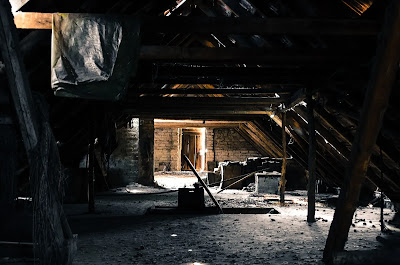The Best Ideas for Reducing Attic Heat
Attics get very warm in the summertime. So what’s the best way to beat that heat? Many companies want you to believe that there is only one solution to fixing the temperature in your attic. However, no one product will necessarily make your home more energy-efficient.
The Best Ideas for Reducing Attic Heat
Here are six different ways to reduce the temperature in your attic and save you money.
1. Try using a thermostatically controlled roof-mounted ventilator. They will help to keep your attic much cooler in the summertime. The thermostat will usually start at 95 degrees Fahrenheit, which is the temperature that the attic fan usually starts at.
2. Using insulation only keeps the attic's heat from traveling through your home. Nevertheless, by adding powered attic fans, you will draw more air into the attic. While it does help to reduce the heat in your attic, putting these fans in your attic costs more because of the loss of conditioned air. The air you lose from the attic is then drawn into your home from the outside, which will cause your cooling bill to go up. (Click here to find out more about Which Thermal Insulations Are the Best to Lower Energy Costs!)
3. Radiant barrier: This coating material gets sprayed onto the outside of your roof to help reduce the amount of heat that is radiated into your attic. The radiant barrier is shown to reduce about 68% of the heat that is being radiated into the attic. This will keep your attic cooler, reducing the cooling load on your home.
4. Continuous ridge vent: This vent runs along the entire ridge of your roof. It is placed at the highest point of your roof so that the hot air rises to get out. However, for best results, you must have sufficient vents to allow for free airflow. The biggest downside to this type of cooling system, though, is that you must install it when you are installing either a new roof or building a new home. This type of venting wouldn’t work properly on an already existing roof.
5. Standard “turtleback” vents: These are the most common vents and are very effective when enough of them are installed. Turtleback vents can be placed on an existing roof and allow for greater airflow when properly installed.
6. Check for restricted vents. Your vents can get clogged from dirt, rust, or insulation that was blown in from the attic. Make sure they are all open and will allow for the maximum amount of air to pass through.
The best time to make these types of repairs to your attic is during the wintertime when it is much cooler and a lot more bearable to fix the cooling in your attic. Just make sure you think ahead before the summertime because many people don’t think they’ll need any sort of repairs until the problem is already there.
So what are you waiting for? Start saving
money on your energy costs by cooling down your attic.
If you have any questions or would like to help with advice, feel free to leave a comment and I will answer as soon as I can.
Thanks!



Comments
Post a Comment